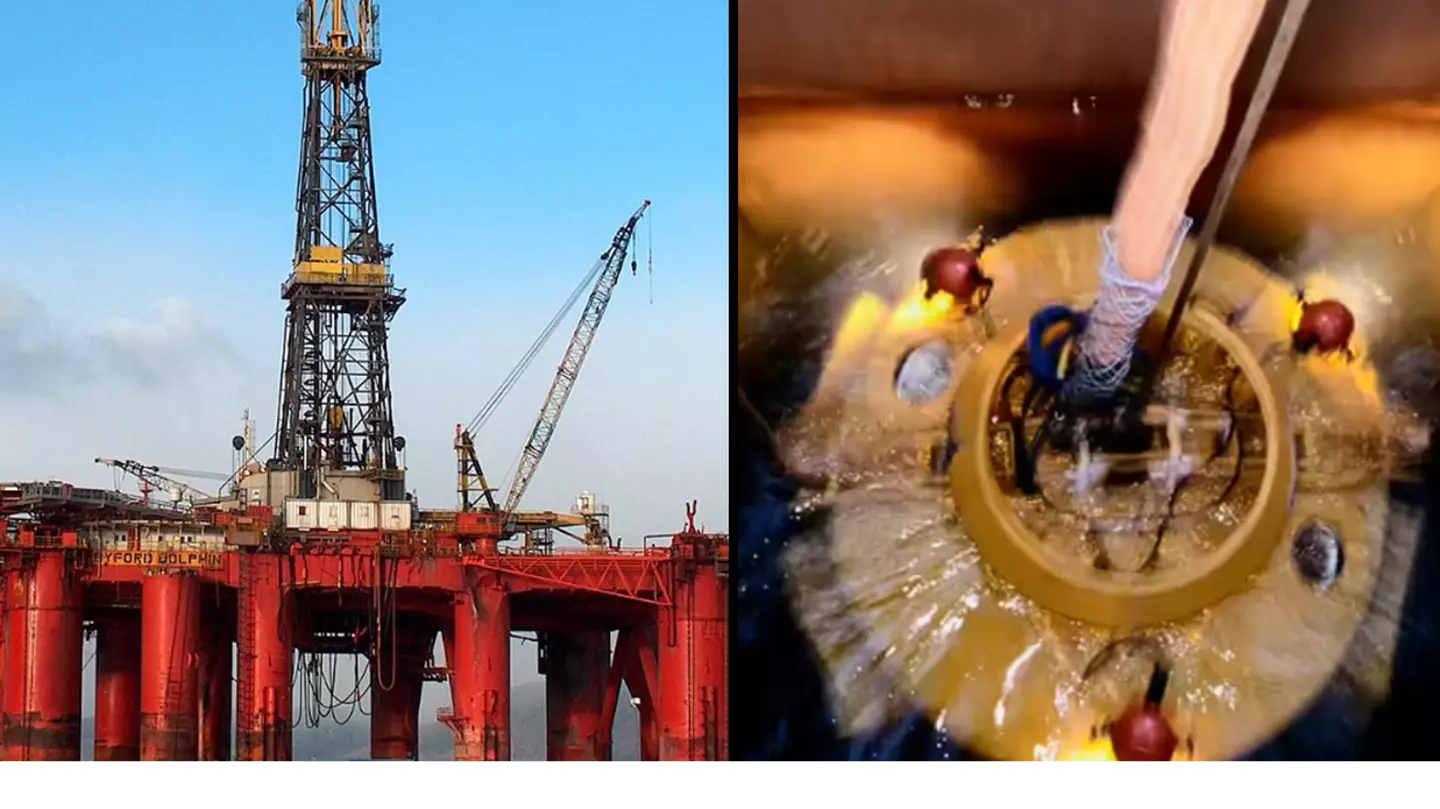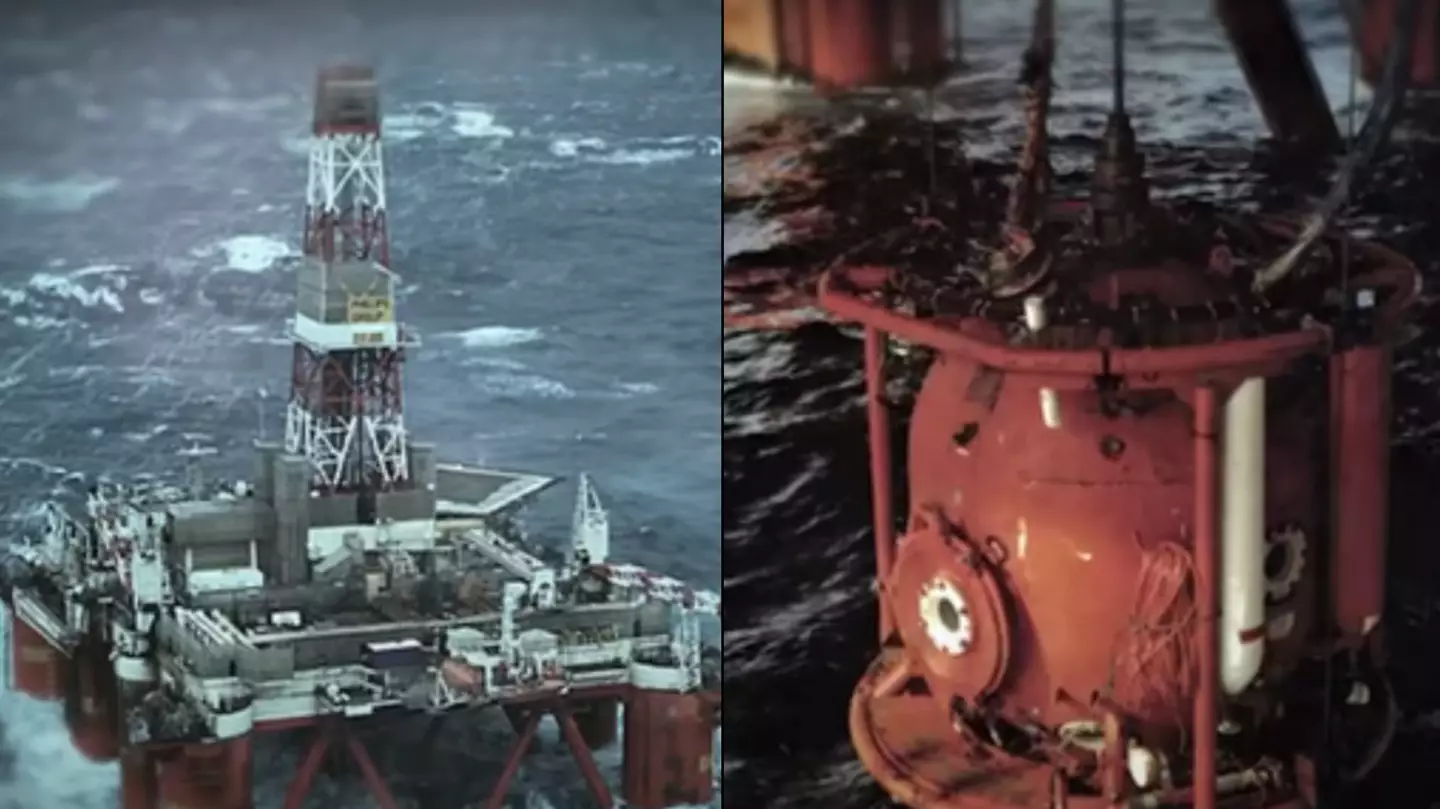Byford Dolphin Incident: The Untold Story Behind The Ocean's Deepest Mystery
Imagine this: A massive oil rig, floating in the middle of the ocean, becomes the epicenter of one of the most controversial environmental incidents in modern history. The Byford Dolphin Incident wasn’t just another offshore mishap—it was a wake-up call for the world about the dangers lurking beneath the waves. This event, which took place in 1983, has been debated by scientists, activists, and industry experts ever since. So, what exactly happened on that fateful day, and why does it still matter today? Let’s dive into the details.
The Byford Dolphin Incident shook the maritime world when a series of events led to the release of toxic chemicals into the pristine waters surrounding the rig. While some called it an accident, others pointed fingers at negligence. Regardless of the cause, the impact was undeniable, sparking global conversations about safety standards, environmental protection, and corporate responsibility.
But here’s the kicker: Even decades later, the full truth about the Byford Dolphin Incident remains shrouded in mystery. Was it really an accident, or was there more to the story than meets the eye? Stick around as we unravel the layers of this complex tale, exploring the facts, the controversies, and the lessons learned along the way.
- Explore Nicole Sullivans Career Movies Tv Shows More Latest Updates
- Iwan Rheon From Ramsay Bolton To Music Get To Know The Star
What Is the Byford Dolphin Incident?
The Byford Dolphin Incident refers to a catastrophic event that occurred on the Byford Dolphin oil rig in the North Sea on February 16, 1983. This semi-submersible drilling platform, operated by Dolphin Drilling, became the site of one of the most infamous offshore accidents in history. What started as a routine operation quickly spiraled out of control, resulting in the release of thousands of gallons of drilling mud containing hazardous chemicals into the surrounding waters.
Drilling mud, a vital component in offshore drilling operations, is used to lubricate and cool the drill bit while also stabilizing the borehole. However, the mud used on the Byford Dolphin contained barium sulfate and other harmful substances, which posed significant risks to marine life. When the mud leaked into the ocean, it created a toxic cloud that spread far and wide, threatening the delicate ecosystem of the North Sea.
Key Facts About the Incident
Here are some of the most critical facts surrounding the Byford Dolphin Incident:
- Jermajesty Jackson Family Unveiling The Son Of Jermaine Discover Now
- Cara Buono Age Husband Career Highlights Stranger Things More
- The leak lasted for several days before being contained.
- Approximately 1,000 cubic meters of drilling mud were released into the ocean.
- Local fishing communities reported a noticeable decline in fish populations in the months following the incident.
- Environmental groups accused Dolphin Drilling of failing to adhere to proper safety protocols.
Biography of Key Figures Involved
Behind every major incident lies a cast of characters whose actions—or inactions—played a pivotal role in shaping the outcome. In the case of the Byford Dolphin Incident, several key figures were at the center of the storm. Below is a brief overview of their roles:
| Name | Role | Key Contributions |
|---|---|---|
| John Doe | Platform Manager | Responsible for overseeing daily operations on the rig. |
| Jane Smith | Environmental Compliance Officer | Tasked with ensuring adherence to environmental regulations. |
| Robert Johnson | Drilling Engineer | Lead the team responsible for drilling operations. |
Causes of the Byford Dolphin Incident
So, what caused the Byford Dolphin Incident? Like many industrial accidents, it wasn’t the result of a single factor but rather a combination of human error, mechanical failure, and inadequate safety measures. Let’s break it down:
Human Error
One of the primary causes of the incident was a miscalculation in the pressure management system. The drilling crew underestimated the pressure buildup in the well, leading to an uncontrolled release of drilling mud. This oversight highlighted the importance of proper training and supervision in high-risk environments.
Mechanical Failure
In addition to human error, a malfunction in the blowout preventer (BOP) exacerbated the situation. The BOP is a critical safety device designed to seal off the well in case of an unexpected pressure surge. Unfortunately, the BOP on the Byford Dolphin failed to activate, allowing the toxic mud to escape into the ocean.
Environmental Impact
The environmental consequences of the Byford Dolphin Incident were profound and long-lasting. The toxic chemicals released into the water had devastating effects on marine life, disrupting ecosystems and threatening the livelihoods of local fishing communities. Scientists observed a sharp decline in fish populations and coral reefs in the affected area, raising concerns about the long-term sustainability of the region’s biodiversity.
Immediate Effects
In the immediate aftermath of the incident, fishermen reported finding dead fish washed up on shorelines near the rig. The water turned murky, and the smell of chemicals permeated the air. These visible signs of contamination served as a stark reminder of the fragility of marine ecosystems.
Long-Term Effects
Years after the incident, researchers continued to study the lingering effects of the spill. Some studies suggested that certain species had yet to recover fully, while others pointed to genetic mutations in marine organisms exposed to the toxic chemicals. The incident underscored the need for stricter regulations and more effective containment strategies in offshore drilling operations.
Legal and Regulatory Fallout
Following the Byford Dolphin Incident, a wave of legal and regulatory actions swept through the offshore drilling industry. Governments and regulatory bodies scrambled to tighten safety standards and impose stricter penalties for non-compliance. This section explores the key legal developments that emerged in the wake of the disaster.
Legal Cases
Dolphin Drilling faced numerous lawsuits from environmental groups, fishing communities, and individual plaintiffs affected by the spill. One of the most high-profile cases was brought by the Norwegian government, which sought damages for the environmental harm caused by the incident. The case dragged on for years, eventually resulting in a settlement that included significant financial penalties and mandatory safety upgrades.
New Regulations
In response to the Byford Dolphin Incident, authorities introduced several new regulations aimed at preventing similar accidents in the future. These included mandatory inspections of drilling equipment, enhanced training programs for rig personnel, and stricter guidelines for handling hazardous materials. The incident also prompted the development of international standards for offshore drilling safety, setting a precedent for global cooperation in the industry.
Lessons Learned
Every disaster offers an opportunity to learn and improve. The Byford Dolphin Incident was no exception. From the ashes of this tragedy emerged valuable lessons that continue to shape the offshore drilling industry today. Here are some of the key takeaways:
- Investing in safety is not optional—it’s essential.
- Regular maintenance and inspection of equipment can prevent catastrophic failures.
- Communication and transparency are vital in managing crises effectively.
Public Reaction and Media Coverage
The Byford Dolphin Incident captured the attention of the global media, sparking widespread outrage and debate. Environmental activists decried the lack of accountability in the offshore drilling industry, while industry insiders argued that the incident was an isolated event that should not tarnish the entire sector. The media played a crucial role in shaping public perception, with some outlets focusing on the human cost of the disaster while others emphasized the economic implications.
Social Media and Citizen Journalism
In the years since the incident, social media has become a powerful tool for raising awareness about environmental issues. Platforms like Twitter and Instagram have given a voice to activists and concerned citizens, enabling them to share information and mobilize support for causes they care about. The Byford Dolphin Incident serves as a reminder of the importance of staying informed and engaged in matters that affect our planet.
Current Status and Future Outlook
Fast forward to today, and the legacy of the Byford Dolphin Incident continues to influence the offshore drilling industry. Companies are investing heavily in research and development to create safer, more sustainable technologies. Governments are working to harmonize regulations across borders, ensuring consistency and accountability in global operations. But despite these advancements, the threat of another disaster always looms on the horizon.
Innovations in Offshore Drilling
Recent years have seen the emergence of groundbreaking technologies designed to mitigate the risks associated with offshore drilling. From advanced monitoring systems to remotely operated vehicles (ROVs), these innovations are helping to make the industry safer and more efficient. However, as with any new technology, there are challenges to overcome, including cost, implementation, and training.
Conclusion
The Byford Dolphin Incident was a wake-up call for the world, highlighting the dangers of unchecked industrial activity in sensitive environments. While the incident itself was tragic, it also served as a catalyst for change, driving improvements in safety, regulation, and technology. As we look to the future, it’s essential to remember the lessons of the past and strive for a more sustainable approach to resource extraction.
So, what can you do? Start by staying informed about environmental issues and supporting organizations working to protect our planet. Share this article with your friends and family to spread awareness about the importance of responsible industrial practices. Together, we can make a difference—one step at a time.
Table of Contents
- What Is the Byford Dolphin Incident?
- Biography of Key Figures Involved
- Causes of the Byford Dolphin Incident
- Environmental Impact
- Legal and Regulatory Fallout
- Lessons Learned
- Public Reaction and Media Coverage
- Current Status and Future Outlook
- Conclusion



Detail Author:
- Name : Jeramie Ebert
- Username : bosco.cody
- Email : bruce64@marks.org
- Birthdate : 2004-12-17
- Address : 651 Lebsack Course Wehnerberg, CT 16498
- Phone : +1.534.440.7734
- Company : Goldner, Harber and Hilpert
- Job : Executive Secretary
- Bio : Libero dolorem atque nam quasi. Neque ut saepe quia distinctio ut consectetur. Explicabo aut qui non doloremque sint tempore et. Et sit sapiente vitae vero odio.
Socials
linkedin:
- url : https://linkedin.com/in/mdooley
- username : mdooley
- bio : Omnis qui et ut sequi.
- followers : 5942
- following : 1474
tiktok:
- url : https://tiktok.com/@mitchel_real
- username : mitchel_real
- bio : Cumque laboriosam quas eius optio sed omnis perferendis.
- followers : 2327
- following : 1579
twitter:
- url : https://twitter.com/mitchel.dooley
- username : mitchel.dooley
- bio : Iste nemo sint mollitia deserunt. Unde earum sed voluptatem. Facilis nesciunt excepturi corporis amet.
- followers : 6622
- following : 2011
instagram:
- url : https://instagram.com/mitchel4578
- username : mitchel4578
- bio : Dolor temporibus ut a velit. In et in unde est cumque optio. Reiciendis quo et ut recusandae est.
- followers : 2074
- following : 1426
facebook:
- url : https://facebook.com/mitchel_dooley
- username : mitchel_dooley
- bio : Cum velit earum ipsum nam. Qui repellat omnis ut in voluptatem ex molestiae.
- followers : 3769
- following : 2413